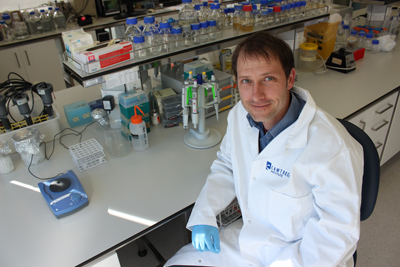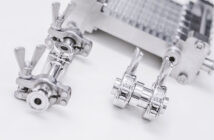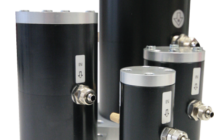
Cawthron Institute scientist, Dr Xavier Pochon.
Cawthron Institute scientists have proven that DNA technology can be used to accurately and effectively assess changes in the marine environment around industry operations.
This technology, referred to as Next-Generation Sequencing (NGS), is a cheaper, faster way to monitor the impact marine industries have on the natural environment.
“NGS will make a huge difference. In terms of speed, it’ll be like going from dial-up internet to ultra-fast broadband,” says Cawthron Institute scientist, Dr Xavier Pochon.
Aquaculture and off-shore oil and gas sectors worldwide see great potential for the technology. They will be able to monitor the environment, as they are legally required to, in near real-time.
“Industries can know instantly if anything is changing in the marine ecosystems around their operations. They can respond and adapt their practices immediately – it’s a game changer,” Cawthron Institute Chief Executive, Charles Eason, says.
Currently, environmental monitoring world-wide relies on either chemical analysis or identification of organisms using a microscope. It can take up to eight months to deliver results.
“Current monitoring is heavily dependent on traditional taxonomy to analyse the ecological changes of thousands of organisms, which is time consuming, expensive and an area of shrinking capability worldwide,” Dr Pochon, says.
“It can take decades to develop the skills to successfully identify microscopic organisms and, for organisms at the larval life stage, it’s often impossible without the right expertise.”
For the past two years, the project has been in a ‘proof of concept’ phase with the scientists trialling the technology for monitoring the seabed around salmon farms in New Zealand’s Marlborough Sounds and from Stewart Island, in parallel with traditional monitoring methods. After two years’ research, Dr Pochon and fellow Cawthron scientists Dr Susie Wood and Dr Nigel Keeley, in collaboration with Professor Jan Pawlowski from the University of Geneva, Switzerland, have proved that the health of the marine environment near aquaculture farms can be assessed by rapidly analysing the DNA of a group of microscopic single-celled organisms called foraminifera. These are abundant, diverse and highly responsive to environmental disturbance. They found that the new technology returned similar results as traditional methods, but in a fraction of the time and with potential to analyse many hundreds of species simultaneously.
“World-wide it currently takes between three and eight months to get results, that means these operations could have been breaching guidelines for months before they know about it, or they could have made costly and unnecessary adjustments only to find out that there was no problem,” Dr Pochon says. “This technology overcomes those challenges.”
The hope is that eventually, NGS will allow scientists to discover exactly what is living in an area via an automated process within days; by providing faster results, industry will be able to respond much faster and environmental impacts may be minimised.
Their findings have already attracted interest from salmon farming industries in Scotland, Norway and the United Kingdom, where the sector is much bigger than New Zealand. Norway for example has 1200 salmon farms, whereas New Zealand has around ten currently in operation.
“Marine industries are very excited about this – they need a tool that allows them to affordably increase the frequency of their monitoring, while providing an almost real-time result, reducing the cost and demonstrating environmental sustainability.”
This research has been funded by the Ministry of Business, Innovation and Employment, with in-kind support from New Zealand King Salmon Ltd. Cawthron itself has invested around $80,000 in a liquid workstation ‘robot’, which enables rapid processing of hundreds of samples simultaneously. Phase two of the project, pending further Government funding, involves comparing year to year results from the same locations in the Marlborough Sounds, Stewart Island, Norway, Scotland and the Faroe Islands over a three year period.
Expanding the method from finfish aquaculture, to mussel aquaculture and the oil and gas sectors, and including other potential indicator organisms, will also be investigated.
The latest results will be published in two international peer-reviewed journals at the end of the year.




























































































